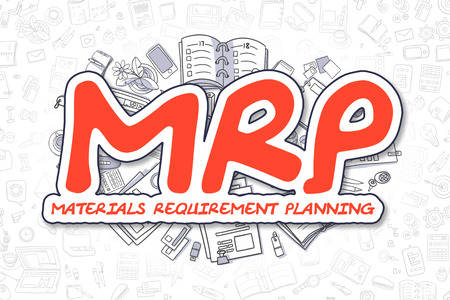
Since the inception of MRP, supply chains have dramatically evolved from being simple linear based chains into more complex multi-node global supply networks. As network complexity has increased so too have the volatility levels in demand and supply. The synchronization of supply and demand is further complicated as customer tolerance times decrease, the number of parts with long lead times increase, product life-cycles become shorter and product complexity increases. This is the New Normal of today’s business landscape.
It’s bad enough that we expect MRP to work in this New Normal, but we knowingly drive it with an inaccurate forecast. Best-in-class companies measure forecast accuracy at around 75%, yet we continue to plan and execute production environments and our global supply networks based on a level of accuracy that is just not acceptable. Why do we plan and execute the entire supply network to this level of accuracy? MRP is entirely dependent on an unreliable forecast so it’s no wonder that MRP is unable to achieve the levels of inventory performance that we expect and require today.
The issues that the New Normal brings are further compounded by the fact that MRP’s planning logic further amplifies volatility and system nervousness as demand and supply flow through the entire network driving higher levels of inventory, stock-outs and unacceptable customer service performance. MRP is a great application for transactional activity, but due to a combination of 1960’s planning logic and working in the New Normal, MRP has become the main source of the Bullwhip Effect and it no longer has the capability to provide the right information to make the right decisions within today’s global supply networks.
Demand Driven MRP (DDMRP) is the solution for supply chain planning in the 21st century. DDMRP provides companies with the operational planning and execution tools to revolutionize their supply chains, right-sizing inventory at each strategic location across the supply network. These strategic inventories decouple the entire supply network, absorbing inherent variabilities and volatilities enabling visibility, control, responsiveness and agility.
Global organizations such as Unilever, Michelin, Coca-Cola, BT (British Telecom) and others small to large have already adopted DDMRP enabling improved market responsiveness, reduction in lead times, elimination of variability and volatility throughout their supply networks.
Read the next installment in this series, MRP – Solution or Problem: Part 3
Read the MRP – Solution or Problem: Part 1
Full Article: Download
TheONE DDMRP software is fully compliant that enhances existing MRP systems by replacing traditional planning logic with a series of Demand Driven planning and execution tools that promote increased visibility, responsiveness and agility through the entire supply network. Average inventory levels will be reduced while customer service levels are increased, lead times will compress and supply chain variabilities will be absorbed. The age-old problems characteristic of MRP across today’s global supply networks will become a thing of the past.
Contact us today so that your company can start to benefit from DDMRP before your competitor does!
Read more about how High Impact Coaching & Strategies can drive substantial benefits in your organization:
Newsletter Sign-Up
Keep up-to-date on what’s happening in our Demand Driven World. Get information manufacturing and supply chain topics as well as news on client achievements, up and coming training events and other interesting stuff!






